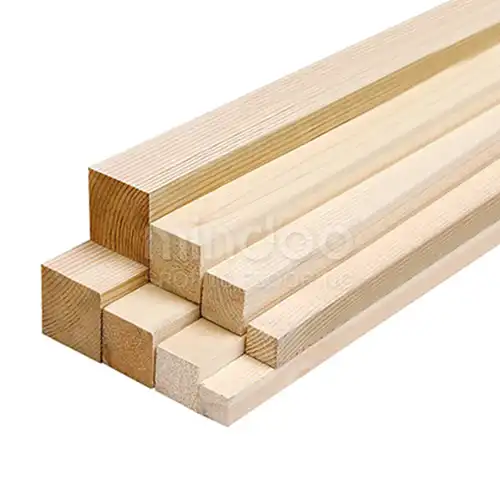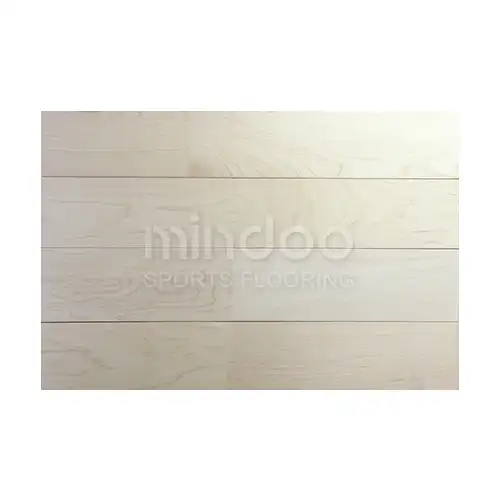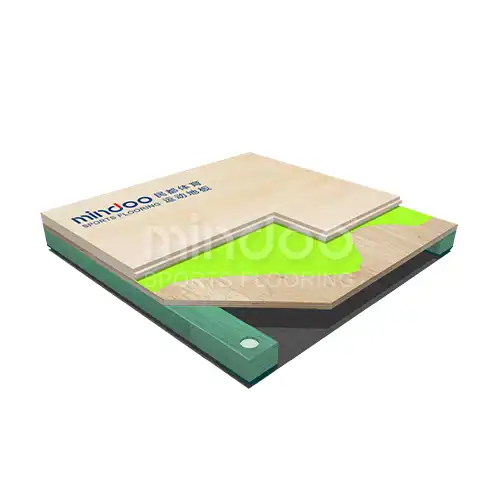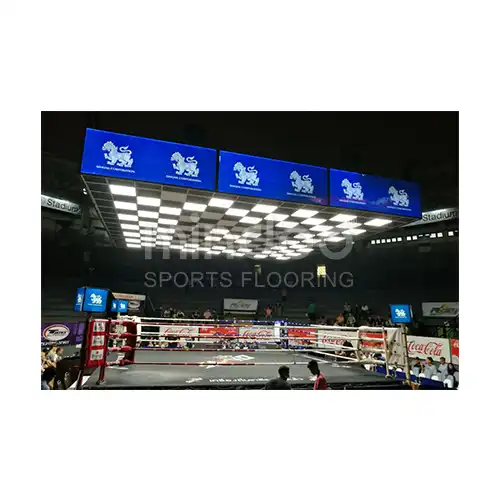The Rise of Composite Wood Flooring in Sports Venues: A Smart Alternative?
When it comes to selecting flooring for sports venues, particularly for basketball, volleyball, and other high-intensity activities, the decision is not just about aesthetics—it’s about performance, durability, and player safety. Traditional hardwood floors have long been the gold standard for these types of venues, but as construction and renovation costs continue to rise, facility managers are increasingly considering alternatives. One such option is composite wood flooring, a hybrid of engineered materials designed to mimic the look and feel of natural wood.
So, can composite wood flooring be a viable option for sports venues, and how does it stack up against traditional hardwood? Let’s break it down, looking at the key considerations from durability to player performance.
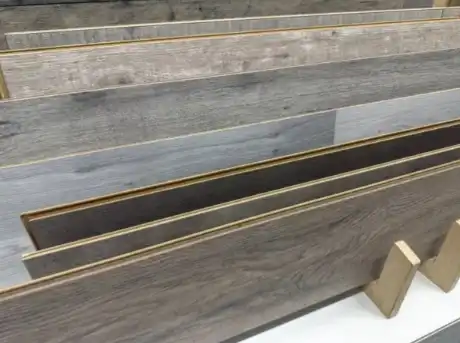
What is Composite Wood Flooring?
Before diving into the pros and cons, it’s essential to understand exactly what composite wood flooring is. Unlike traditional solid hardwood, composite wood is made by combining wood fibers, resins, and other materials to create engineered boards. These boards are then layered or pressed together under heat and pressure, which results in a strong, stable product that is often more affordable than solid wood. Composite wood floors are typically designed to replicate the look of natural wood, but they offer greater resistance to moisture, wear, and temperature fluctuations.
In short, composite wood is an engineered solution to replicate the aesthetic and performance of hardwood, but with enhanced durability and versatility.
Durability: Can Composite Wood Hold Up Under Intense Activity?
When it comes to sports venues, durability is paramount. These floors face constant heavy traffic, high-impact movements, and, in some cases, spills or moisture from cleaning routines. Hardwood has always been favored for its resilience, but composite wood may offer some advantages in this department.
Composite wood flooring is engineered to resist warping, swelling, and discoloration—issues that are more commonly seen with traditional wood when exposed to humidity or moisture. This makes composite wood flooring a potentially ideal choice for venues that might struggle with moisture, such as indoor pools, multi-use arenas, or facilities in regions with high humidity.
However, it’s important to note that composite wood is still susceptible to scratches, dents, and damage from sharp objects. In high-traffic sports environments, such as basketball courts, composite floors may not last as long as hardwood under constant abuse from players’ cleats and high-impact actions. While composite wood is highly durable, it may need to be replaced or refinished more frequently, depending on the intensity of usage.
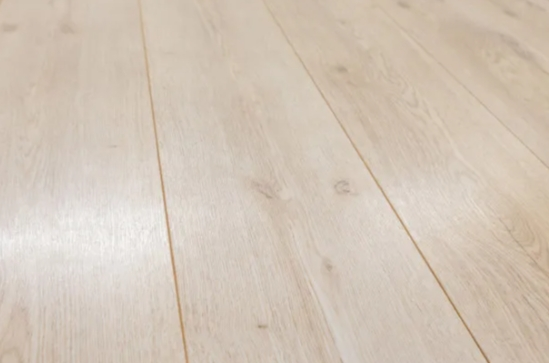
Performance: How Does Composite Wood Affect Play?
When choosing flooring for a sports venue, performance is at the forefront of every decision. Players need surfaces that offer good traction, shock absorption, and ball bounce. Traditional hardwood has been a trusted surface for these qualities for decades, but does composite wood measure up?
In terms of traction, composite wood flooring can provide a similar grip to hardwood, but it depends on the finish. A proper finish ensures that players don’t slip during rapid movements or sharp turns. However, some lower-quality composite floors may not offer the same level of friction or comfort for players. For professional sports, where every detail counts, it is crucial to choose a high-quality composite wood option with proper finishing to ensure a safe and effective playing surface.
As for shock absorption, composite wood floors typically perform well, offering a moderate level of cushioning compared to hardwood. This is important in minimizing the impact on players’ joints and reducing the likelihood of injury during jumps or high-intensity activities. However, the level of shock absorption might not be as ideal as some specialized flooring materials designed specifically for sports, such as rubberized or cushioned vinyl surfaces.
Finally, the bounce of the ball is crucial in sports like basketball. While composite wood can replicate the ball bounce of hardwood reasonably well, it might not be able to achieve the same level of consistency. In professional settings, this could impact shooting accuracy or passing precision, but in most recreational settings, the difference may be less noticeable.
Cost-Effectiveness: A More Affordable Solution?
One of the key selling points of composite wood is its cost-effectiveness. Traditional hardwood floors can be expensive, not only in terms of the initial installation but also due to maintenance requirements over the years. Refinishing hardwood floors regularly and addressing minor issues like scratches or dents can add up, making it a costly long-term investment.
On the other hand, composite wood is typically more affordable upfront and can have lower long-term maintenance costs. It is also less susceptible to warping or moisture damage, which can be a significant cost-saving benefit in some environments. For sports venues on a budget, composite wood offers an attractive alternative that can still provide many of the benefits of traditional hardwood without the hefty price tag.
That said, while composite wood may be cheaper initially, the need for more frequent replacements or refinishing could eventually make it a more expensive option in the long run, particularly in high-traffic, high-impact areas.
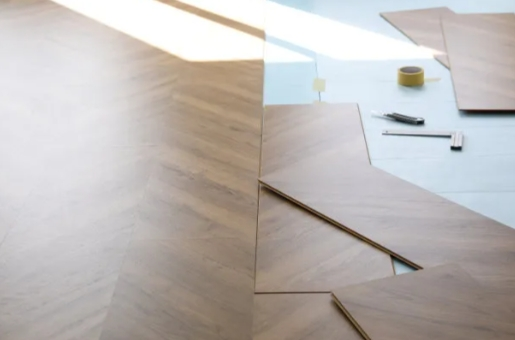
Sustainability: Is Composite Wood Environmentally Friendly?
As sustainability becomes an increasing priority in construction and design, many are looking at the environmental impact of their flooring choices. Traditional hardwood is often seen as a sustainable material when sourced responsibly. However, deforestation and overharvesting have raised concerns about its long-term sustainability.
Composite wood, on the other hand, is typically made using recycled wood fibers, which can make it a more eco-friendly option. Additionally, many composite wood products are designed to be recyclable at the end of their life cycle, further reducing their environmental footprint. For venues looking to make more sustainable choices, composite wood flooring might be a greener alternative to traditional hardwood.
The Verdict on Composite Wood Flooring for Sports Venues
In conclusion, composite wood flooring can be a viable option for some sports venues, but it depends on several factors, including the level of activity, budget, and desired performance characteristics. While composite wood offers impressive durability, cost-effectiveness, and environmental benefits, it may not provide the same performance qualities—particularly in terms of ball bounce and long-term durability—as traditional hardwood floors.
For recreational venues, community centers, or multi-purpose arenas, composite wood can be an excellent choice, providing a balance between affordability and durability. However, for high-performance, professional sports environments, traditional hardwood flooring still remains the gold standard, particularly when consistent performance and top-tier player safety are at stake.
Ultimately, when choosing flooring for a sports venue, it's crucial to assess your specific needs—whether it's cost, durability, or performance—and select the material that best fits those criteria. Composite wood might not replace hardwood in every scenario, but it offers an intriguing alternative for those looking for a cost-effective and environmentally friendly solution without compromising too much on performance.

